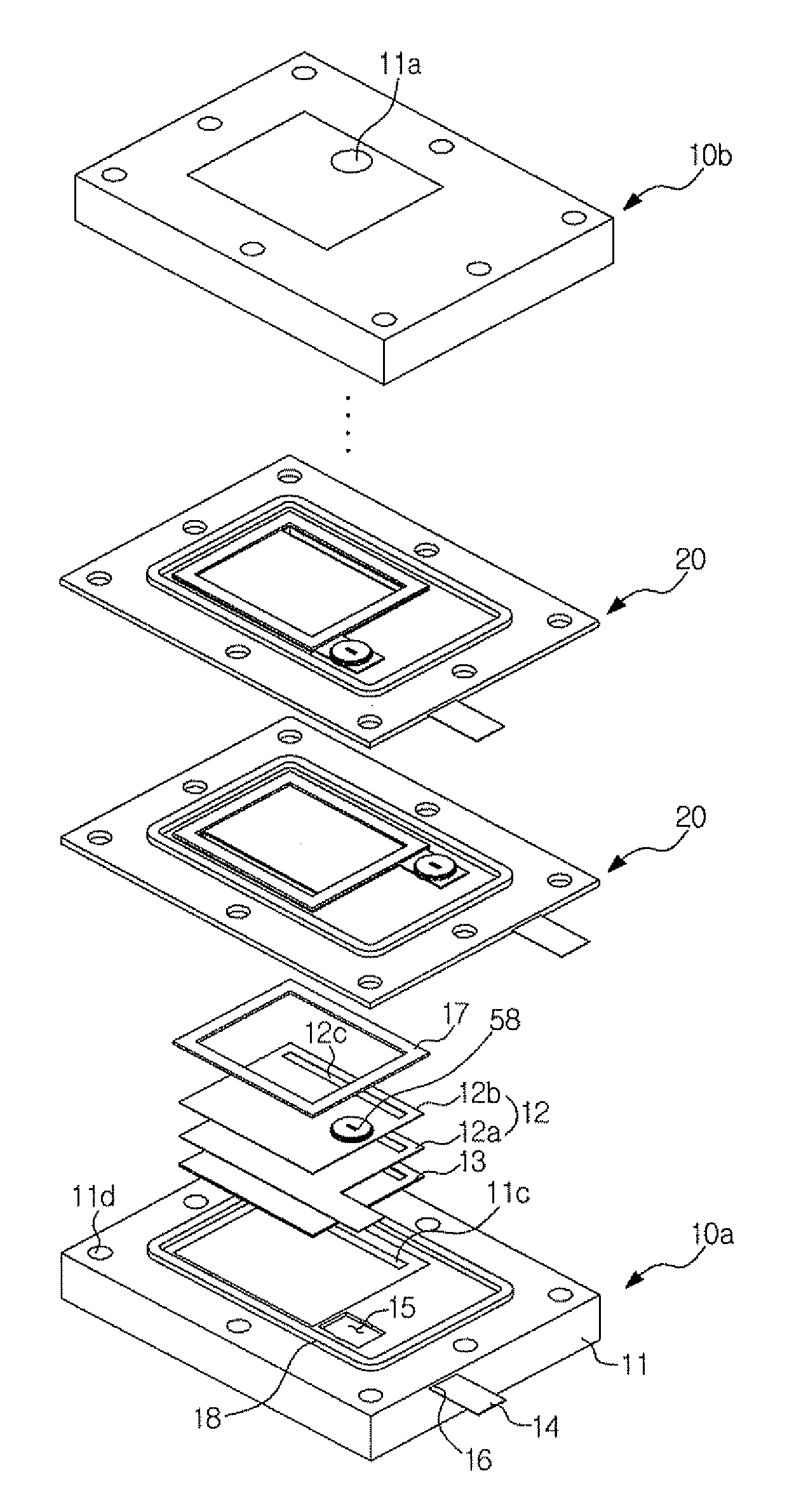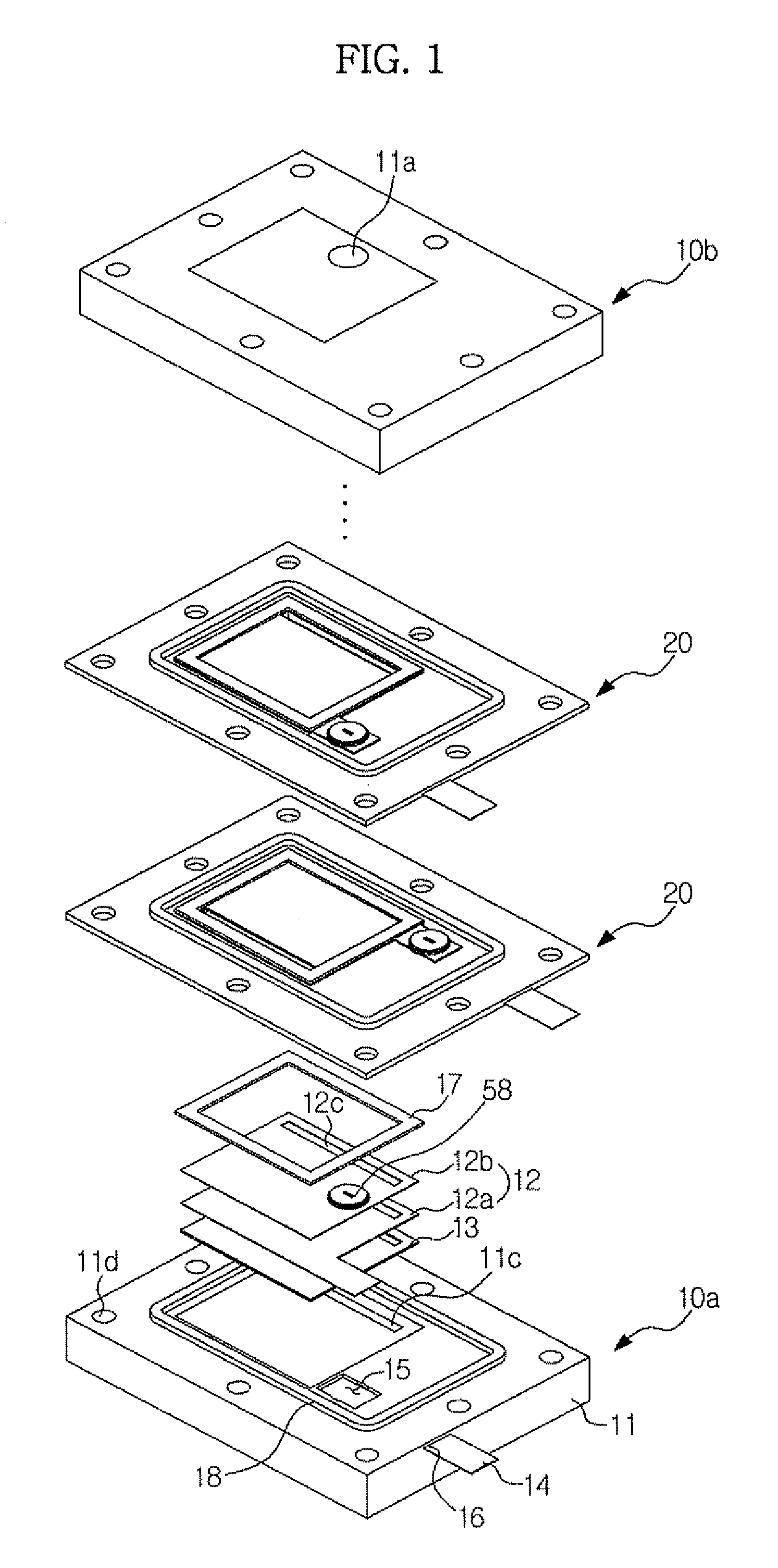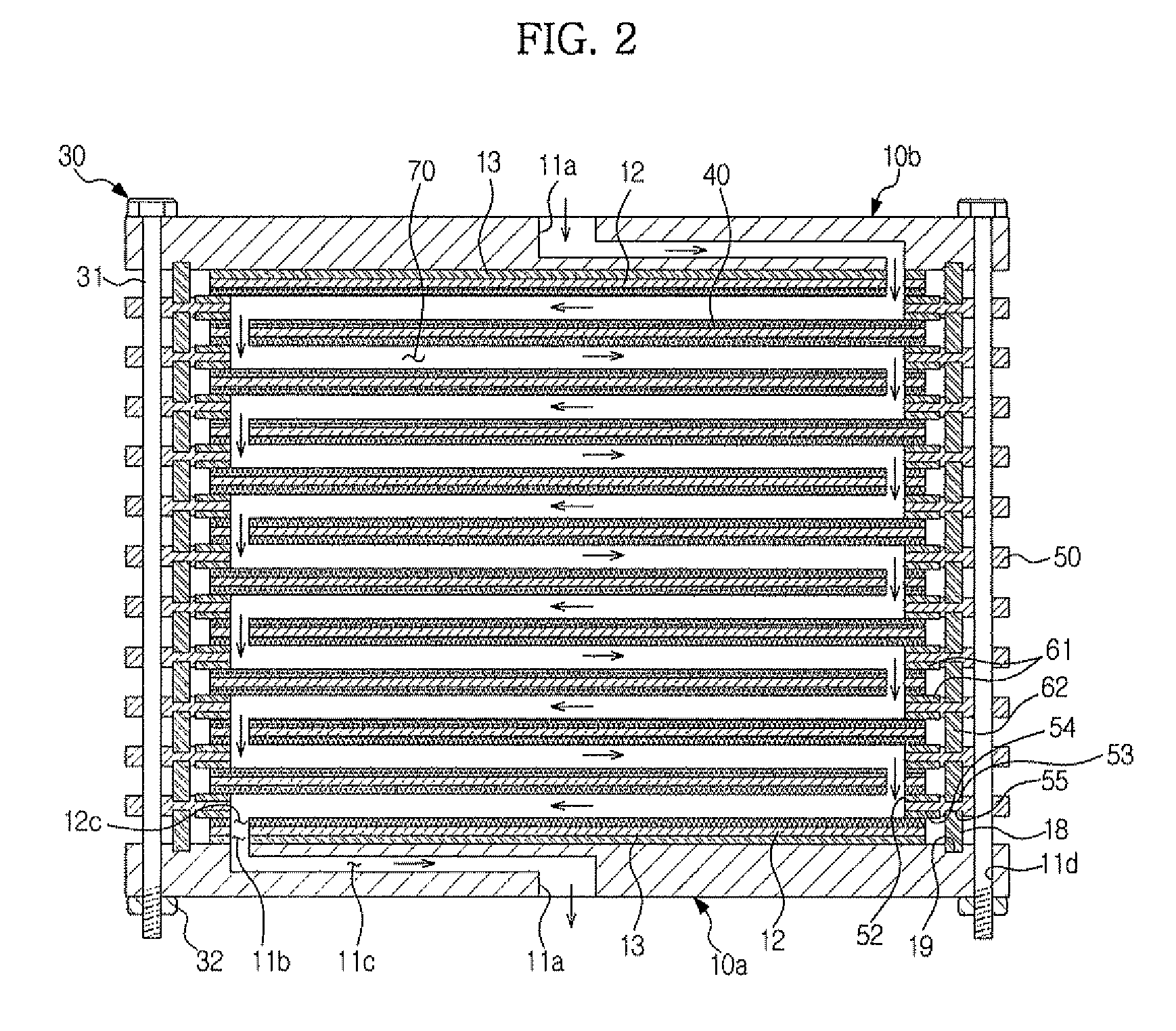Deionization apparatus and method of manufacturing the same
a deionization apparatus and deionization technology, applied in the direction of electrostatic separation, crystal growth process, solid separation, etc., can solve the problems of uneconomic method using ion exchange resin, partially blocked pores of carbon material, electrical conductivity may deteriorate, etc., to prevent the pores of electrodes from being blocked, improve ion removal efficiency, and prevent a reduction of electrical conductivity
- Summary
- Abstract
- Description
- Claims
- Application Information
AI Technical Summary
Benefits of technology
Problems solved by technology
Method used
Image
Examples
Embodiment Construction
[0052]Reference will now be made in detail to exemplary embodiments of the present invention, examples of which are illustrated in the accompanying drawings, wherein like reference numerals refer to like elements throughout. The embodiments are described below to explain the present invention by referring to the figures.
[0053]Hereinafter, a capacitive deionization apparatus according to an embodiment of the present invention will be described in detail with reference to the accompanying drawings.
[0054]FIG. 1 illustrates an exploded perspective view of the capacitive deionization apparatus according to the embodiment of the present invention. FIG. 2 illustrates a cross-sectional view of the capacitive deionization apparatus according to the embodiment of the present invention. FIG. 3 illustrates an exploded perspective view of a spacer unit included in the capacitive deionization apparatus according to the embodiment of the present invention.
[0055]The capacitive deionization apparatu...
PUM
| Property | Measurement | Unit |
|---|---|---|
| size | aaaaa | aaaaa |
| specific distance | aaaaa | aaaaa |
| flowing time | aaaaa | aaaaa |
Abstract
Description
Claims
Application Information
 Login to View More
Login to View More - R&D
- Intellectual Property
- Life Sciences
- Materials
- Tech Scout
- Unparalleled Data Quality
- Higher Quality Content
- 60% Fewer Hallucinations
Browse by: Latest US Patents, China's latest patents, Technical Efficacy Thesaurus, Application Domain, Technology Topic, Popular Technical Reports.
© 2025 PatSnap. All rights reserved.Legal|Privacy policy|Modern Slavery Act Transparency Statement|Sitemap|About US| Contact US: help@patsnap.com



